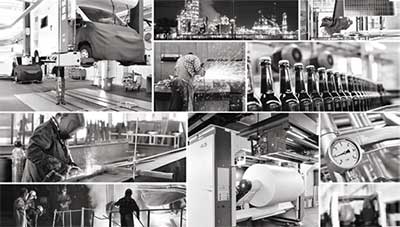Date : 02/06/2023
Relevance: GS Paper3:Economic planning and Develoment
Key Words: Economic reforms of 1991, "Make in India" campaign, Production-Linked Incentive scheme, Liberalizing reforms in India
Context -
- India's manufacturing sector has long faced challenges in its growth and contribution to the economy. The debate between manufacturing and services as the desirable path for economic development has been ongoing.
- India has witnessed a qualitative improvement in its manufacturing sector since the economic reforms of 1991, the share of manufacturing in the economy has not increased significantly.
- What are the root causes behind India's manufacturing challenge ?, and highlights the crucial factors that have been overlooked in creating a conducive ecosystem for manufacturing to flourish.
Neglected Potential: The Unimpressive Record
- Economic reforms of 1991 focused on manufacturing, but the significant scaling down of tariffs and the dismantling of the ‘licence-permit Raj’ did not lead to an increase in the share of manufacturing in the economy.
- The 'Make in India' campaign and Production-Linked Incentive scheme have not produced the desired results.
- Manufacturing growth has been consistently low, even in the presence of policy initiatives, indicating underlying structural issues.
Make In India Initiative:
Make in India is an initiative by the Government of India to create and encourage companies to develop, manufacture and assemble products made in India and incentivize dedicated investments into manufacturing. The policy approach was to create a conducive environment for investments, develop a modern and efficient infrastructure, and open up new sectors for foreign capital. The initiative targeted 25 economic sectors for job creation and skill enhancement, and aimed "to transform India into a global design and manufacturing export hub.
Production-Linked Incentive scheme:
Production Linked Incentive, or PLI, scheme of the Government of India is a form of performance-linked incentive to give companies incentives on incremental sales from products manufactured in domestic units. It is aimed at boosting the manufacturing sector and to reduce imports.Objective of these schemes entail Make in India, incentivising foreign manufacturers to start production in India and incentivise domestic manufacturers to expand their production and exports.
The Role of Household Demand
- Household demand for necessities like food, housing, health, and education takes precedence over manufactured goods.
- The share of food expenditure is high in India compared to other economies, hindering the growth of demand for manufactures.
- The relationship between per capita income and the share of food expenditure globally is strongly negative, highlighting India's challenge.
The Export Opportunity
- Smaller countries in East Asia succeeded in manufacturing by leveraging exports.
- Infrastructure and workforce skill levels are key determinants of a country's export competitiveness.
- India faces challenges in reaching seaports, poor infrastructure at ports, higher turnaround times, and lack of inexpensive power and industrial waste disposal services.
Educational Gaps
- India's education system lags behind manufacturing-successful countries, as evidenced by international assessments and local studies.
- Learning outcomes in reading ability and numeracy among Indian children are significantly low. (Pratham’s Learning Assessment Report)
- Lack of employability among university graduates and neglected vocational training institutes contribute to a limited skilled labor force. The NITI Aayog had released data showing that only about 5% of Indian youth have had any kind of technical training. The figure for South Korea was over 85%.
Conclusion:
The economic reforms of 1991, while aiming to boost manufacturing, overlooked the crucial need for a comprehensive ecosystem comprising education, training, and infrastructure. Simply relying on liberalizing reforms is not enough. To address India's manufacturing challenge, a holistic approach is required, emphasizing the development of skills, improved education outcomes, and enhanced infrastructure. Only by addressing these critical factors can India's manufacturing sector thrive and contribute significantly to the economy.
Probable Questions for Mains Examination:
- Question 1: Discuss the reasons behind the limited growth of India's manufacturing sector despite the economic reforms of 1991. (10 Marks)
- Question 2: Evaluate the effectiveness of the "Make in India" campaign and the Production-Linked Incentive scheme in promoting manufacturing growth in India. Critically evaluate the neglect of vocational training institutes and its implications for India's skilled labor force and manufacturing capabilities.(15 Marks)
Source : The Hindu






















